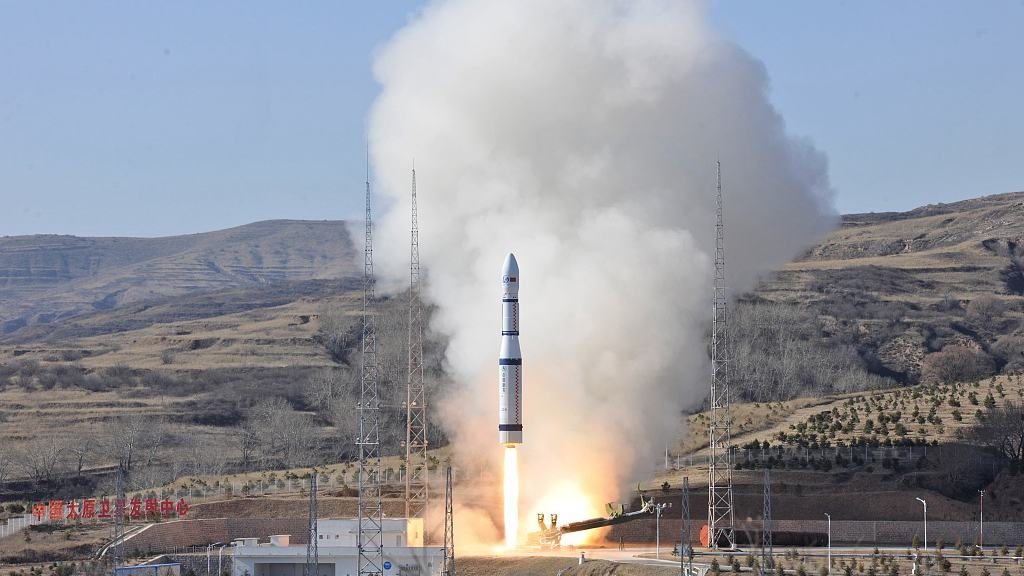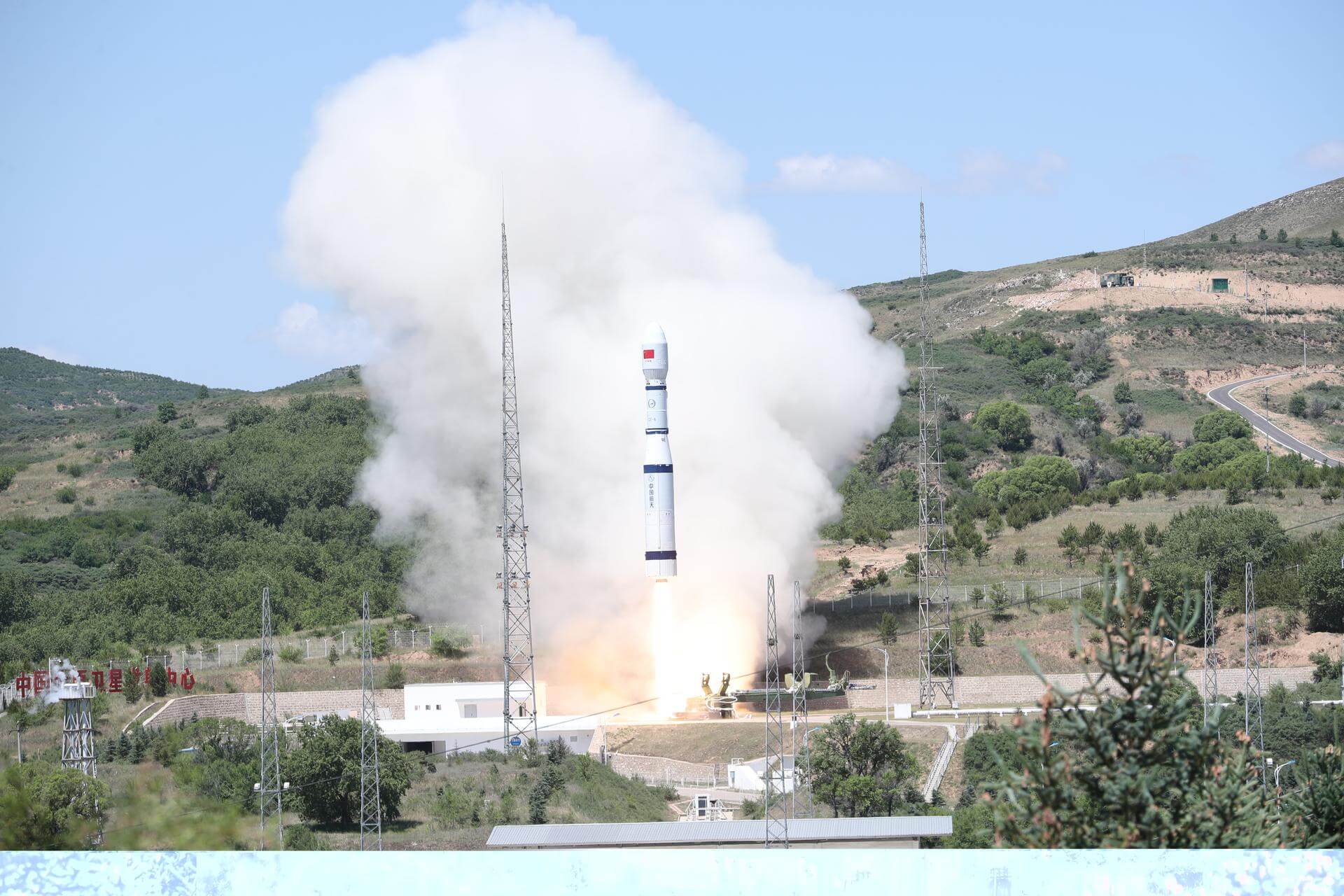
Long March 6
ActiveChina Aerospace Science and Technology Corporation (CASC)
Sept. 19, 2015
Description
Specifications
-
Minimum Stage
1 -
Max Stage
3 -
Length
29.0 m -
Diameter
3.35 m -
Fairing Diameter
― -
Launch Mass
103.0 T -
Thrust
―
Family
-
Name
Long March 6 -
Family
― -
Variant
― -
Alias
― -
Full Name
Long March 6
Payload Capacity
-
Launch Cost
― -
Low Earth Orbit
― -
Geostationary Transfer
Orbit
― -
Direct Geostationary
― -
Sun-Synchronous Capacity
―
China Aerospace Science and Technology Corporation
Government
Chairman & President: Lei Fanpei
CASC 1999The China Aerospace Science and Technology Corporation (CASC) is the main contractor for the Chinese space program. It is state-owned and has a number of subordinate entities which design, develop and manufacture a range of spacecraft, launch vehicles, strategic and tactical missile systems, and ground equipment. It was officially established in July 1999 as part of a Chinese government reform drive, having previously been one part of the former China Aerospace Corporation. Various incarnations of the program date back to 1956.
Long March 6 | Tianping-3A-02
China Aerospace Science and Technology Corporation | ChinaTaiyuan Satellite Launch Center, People's Republic of China
April 3, 2025, 2:12 a.m.
Long March 6 | Tianping-3
China Aerospace Science and Technology Corporation | ChinaTaiyuan Satellite Launch Center, People's Republic of China
Oct. 22, 2024, 12:10 a.m.
Long March 6 | Geely Constellation Group 03
China Aerospace Science and Technology Corporation | ChinaTaiyuan Satellite Launch Center, People's Republic of China
Sept. 5, 2024, 6:30 p.m.
Long March 6 | Shiyan 25
China Aerospace Science and Technology Corporation | ChinaTaiyuan Satellite Launch Center, People's Republic of China
June 20, 2023, 3:18 a.m.
Long March 6 | Shiyan 16 A/B & Shiyan 17
China Aerospace Science and Technology Corporation | ChinaTaiyuan Satellite Launch Center, People's Republic of China
Sept. 26, 2022, 11:50 p.m.
Long March 6 | Jilin-1 High Resolution 03D-09, 35 to 43 & Infrared A01 to 06
China Aerospace Science and Technology Corporation | ChinaTaiyuan Satellite Launch Center, People's Republic of China
Aug. 10, 2022, 4:50 a.m.
Long March 6 | SDGSAT-1
China Aerospace Science and Technology Corporation | ChinaTaiyuan Satellite Launch Center, People's Republic of China
Nov. 5, 2021, 2:19 a.m.
Status: Launch Successful
Mission:
Satellite developed by the Chinese Academy of Sciences (CAS) for pursuing sustainable development. It is expected to provide advanced, open and shared data resources for monitoring and evaluating the sustainable development index representing the interaction between human and nature, in particular providing support for Sustainable Development Goals (SDGs) of the UN 2030 Agenda for Sustainable Development. The satellite has three payloads including thermal infrared, low light level and multispectral imagers, with 300 km wide data acquisition swath capability. It can achieve global coverage within 11 days.
Sun-Synchronous OrbitLong March 6 | KL-Beta
China Aerospace Science and Technology Corporation | ChinaTaiyuan Satellite Launch Center, People's Republic of China
Aug. 4, 2021, 11:01 a.m.
Status: Launch Successful
Mission:
The KL-Beta A and B, satellites are test satellites for a global multimedia satellite system for the German company KLEO Connect and the Chinese company Shanghai Spacecom Satellite Technology. The satellites were built by CAS Microspace and feature a Ka-band communications payload. The prototype system also includes another satellite “GMS-T” built by OHB System of Germany.
Polar OrbitLong March 6 | Zhongzi Group 02 (Ningxia-1-02)
China Aerospace Science and Technology Corporation | ChinaTaiyuan Satellite Launch Center, People's Republic of China
July 9, 2021, 11:59 a.m.
Status: Launch Successful
Mission:
The Ningxin-1 satellites (also called Zhongzi) are a series of Chinese commercial remote sensing satellite owned by Ningxia Jingui Information Technology Co. Ltd. The satellites were built by DFH Satellite Co. Ltd of CAST. They have been reported to be a commercial operated global EM spectrum signal monitoring satellite system (SIGINT).
Low Earth OrbitLong March 6 | Qilu-1, Qilu-4 & others
China Aerospace Science and Technology Corporation | ChinaTaiyuan Satellite Launch Center, People's Republic of China
April 27, 2021, 3:20 a.m.
Status: Launch Successful
Mission:
This launch delivered 9 commercial satellites into low Earth orbit. Qilu-1 and Qilu-4, as well as most other satellites on this mission, are Earth observation spacecraft. One other satellite on this mission is the scientific research and technology verification satellite NEO 1 with the purpose of observing small space bodies, as well as testing the technology to use deployable net for catching small objects in orbit.
Low Earth OrbitLong March 6 | Satellogic x 10
China Aerospace Science and Technology Corporation | ChinaTaiyuan Satellite Launch Center, People's Republic of China
Nov. 6, 2020, 3:19 a.m.
Long March 6 | Ningxia 1 (x5)
China Aerospace Science and Technology Corporation | ChinaTaiyuan Satellite Launch Center, People's Republic of China
Nov. 13, 2019, 6:35 a.m.
Long March 6 | Jilin-1-04, Jilin-1-05 & Jilin-1-06
China Aerospace Science and Technology Corporation | ChinaTaiyuan Satellite Launch Center, People's Republic of China
Nov. 21, 2017, 4:50 a.m.
Long March 6 | 20 Amateur satellites
China Aerospace Science and Technology Corporation | ChinaTaiyuan Satellite Launch Center, People's Republic of China
Sept. 19, 2015, 11:01 p.m.
Long March 3B/E
Fengyun-4C
Launch Complex 2 (LC-2) - Xichang Satellite Launch Center, People's Republic of ChinaChina's geostationary meteorological satellite program FY-4 (Feng Yun 4) is the second generation of chinese geostationary meteorological satellites.
Long March 8A
SatNet LEO Group 17
Commercial LC-1 - Wenchang Space Launch Site, People's Republic of ChinaA batch of 9 Low Earth Orbit communication satellites for the Chinese state owned SatNet constellation operated by the China Satellite Network Group.…
Soyuz 2.1a
Obzor-R No.1
43/4 (43R) - Plesetsk Cosmodrome, Russian FederationNote: Assignment of payloads to this launch is uncertain. The Russian Obzor-R satellite is a planned X-band radar earth observation satellite desi…
LVM-3 (GSLV Mk III)
BlueBird Block 2 #1
Satish Dhawan Space Centre Second Launch Pad - Satish Dhawan Space Centre, IndiaAST SpaceMobile’s Block 2 BlueBird satellites are designed to deliver up to 10 times the bandwidth capacity of the BlueBird Block 1 satellites, requi…
Long March 12A
Demo Flight
Long March 12A Pad - Jiuquan Satellite Launch Center, People's Republic of ChinaFirst test launch of CASC/SAST’s Long March 12A rocket, with a dummy payload. The rocket’s 1st stage attempted to land on a landing pad about 300 km …


